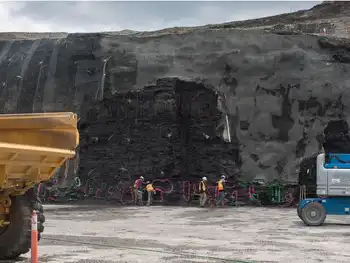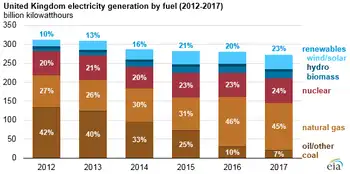Ontario pays big users to cut electricity consumption
TORONTO, ONTARIO - Ontario will pay major power consumers up to $600 per kilowatt hour to shut down production on days when electricity is in short supply, in a bid to avoid rotating blackouts this summer.
Three organizations have already joined the Emergency Load Reduction Program by committing to reduce their electricity consumption or use backup generation upon demand by the province's Independent Electricity System Operator.
"This is a new program that will be implemented this summer," IESO spokesman Terry Young said as temperatures, smog levels and electricity demand soared in southern Ontario.
"It was not in place last summer, but similar programs are in use in neighbouring jurisdictions. It is designed for use in emergency conditions when options to maintain reliability and avoid more severe steps such as rotating blackouts are limited."
Young said the IESO is looking for other companies to join the Toronto Hydro-Electric System, Flakeboard Company Ltd. and Georgia Pacific Canada Inc. in the emergency reduction program. Right now, if all three participants were called upon to cut operations, it would free up 70 megawatts an hour for four hours at a cost to the government of $42,000 per hour.
The IESO also announced it would commit to buying electricity one day ahead so that, unlike last summer, it does not have to scramble at the last minute to secure sometimes scarce power from suppliers.
May 29 was the first hot day of 2006 in Ontario and the IESO, which matches electricity supply and demand, was forced to import electricity from the U.S. because many power plants were still off-line for maintenance. Only about 23,000 megawatts of electricity was available while demand was expected to peak at about 22,800 megawatts. Imports were required to provide a safety margin.
Under the best of operating conditions, the provincial power system this summer will be able to generate 26,000 to 28,000 megawatts of electricity.
In the legislature recently, Energy Minister Dwight Duncan said Ontario's electricity supply is much more secure this summer than it was last year. Faced with rotating blackouts due to soaring demand, the IESO appealed to Ontarians on 12 days last summer to cut back on electricity use. On two days, voltage reductions of five per cent were required. A voltage reduction is the last emergency control option available to power authorities before rotating blackouts are imposed.
"More than 600 megawatts of new nuclear gas, hydroelectric generation have come online in the last year. Not only are they online, but they're working," Duncan said. "I can assure you the power will stay on, not only this summer, but over the next 25 years."
While the minister insisted Ontario is pushing ahead with its pledge to close all coal-fired plants by 2009, opposition leader John Tory is skeptical.
"I think they will not close those coal plants and I don't think they should until they have replacements. At the present course of speed, it means years and years and years before adequate power is in place to replace those coal-fired stations."
Tory said the Grits should have explored adding clean coal technology to the plants when were first elected in 2003.
"It could have saved people's lives, it could have saved environmental damage and I think it might have even saved money if we'd found clean coal technology that was effective."
The Liberals closed one coal-fired plant last year and have promised to shut another three plants that generate a total of about 2,500 megawatts by the end of 2007. The giant Nanticoke plant, which supplies nearly 4,000 megawatts, will not be closed until 2009 two years later than promised during the last election.
NDP Leader Howard Hampton accused the Liberals of plotting to delay a report on the mix of future electricity generation in Ontario that is how much will come for nuclear versus other sources until after the legislature breaks for the summer.
"That really does sound like a government that wants to avoid accountability, wants to avoid any public discussion and hopes to make the announcement in the middle of the summer when they hope no one is looking."
Related News

BC Hydro to begin reporting COVID-19 updates at Site C
VANCOUVER - BC Hydro says it will begin giving regular updates to the public and the Peace River Regional District about its monitoring of the coronavirus COVID-19 at Site C.
BC Hydro met with the Peace River Regional District Sunday via phone call to discuss the forthcoming measures.
"We did a make a commitment to provide regular updates to Peace River Regional District member communities on an ongoing basis," said spokesman Dave Conway.
"(It's) certainly one of the things that we heard that they want and we heard that strongly and repeatedly."
Conway said updates could be posted as early as Monday on BC…




